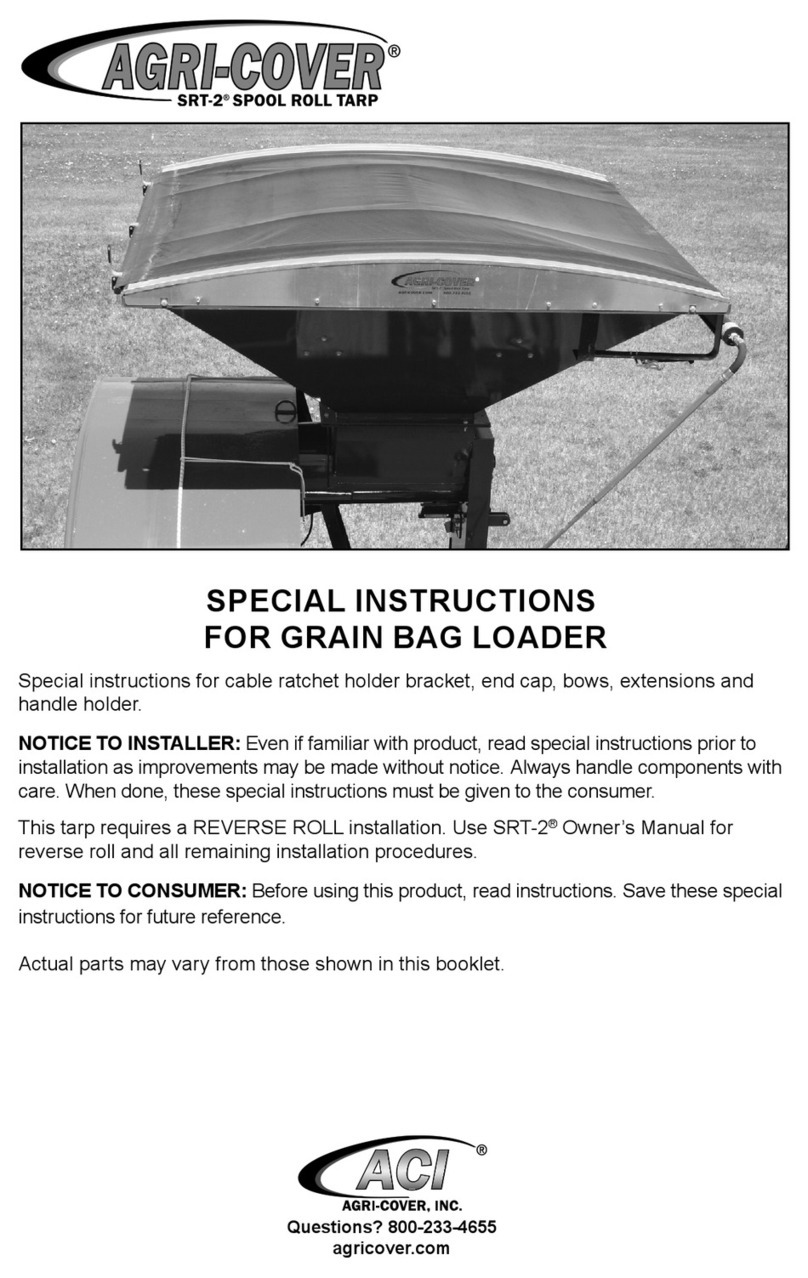
10
7: MOUNTING BOWS
To install bows and extensions, perform one of the following.
SIDE MOUNT
A. Attach bow pocket to inner sides of box, ush with top. Drill 5/16” hole at each
location and insert (2) 3/8” x 1” self-threading bolts. Secure bolts with at washer, lock
washer and nut then tighten.
B. Slide bow extension into each end of bow and place into bow pockets.
C. Repeat for remaining bow locations then proceed to Step 8.
Box rail
Bow pocket
Drill 5/16” holes
in box rail
Flat washer
Nut
Lock washer
3/8” x 1” Self-threading bolt
TOP MOUNT
A. Slide bow extension into end of bow and
ensure 1/2” space from outside edge of box
to bow or bow extension.
B. Drill 5/16” hole and use 3/8” x 1” self-
threading bolt to cut threads for 3/8” x 1”
stainless steel Allen button head bolt.
C. Repeat for remaining bow locations then
proceed to Step 8. Deburr any sharp
edges in contact
with tarp at each
end of bow
1/2”
Box rail
3/8” x 1” Stainless steel
Allen button head bolt
8: ADJUSTING BOWS
A. Start with rst bow at front of box. Center
bow in an upright position and adjust bow to
sit 1” higher than end cap.
B. Drill 5/16” hole 1” from end of bow through
bow and in extension so bolt head will not
rub on tarp. Turn 3/8” x 1” self-threading bolt
into bow assembly to hold bow rigid at proper
height.
TIP: Set front and rear bows to correct height.
Install ridge strap on top of all bows (Step 7)
and draw tight until no slack. Adjust remaining
bows to touch bottom of ridge strap. 3/8” x 1” Self-threading bolt
Bow extension
Bow
TIP: Clamp lock pliers on bow
extension to hold bow in place.






























